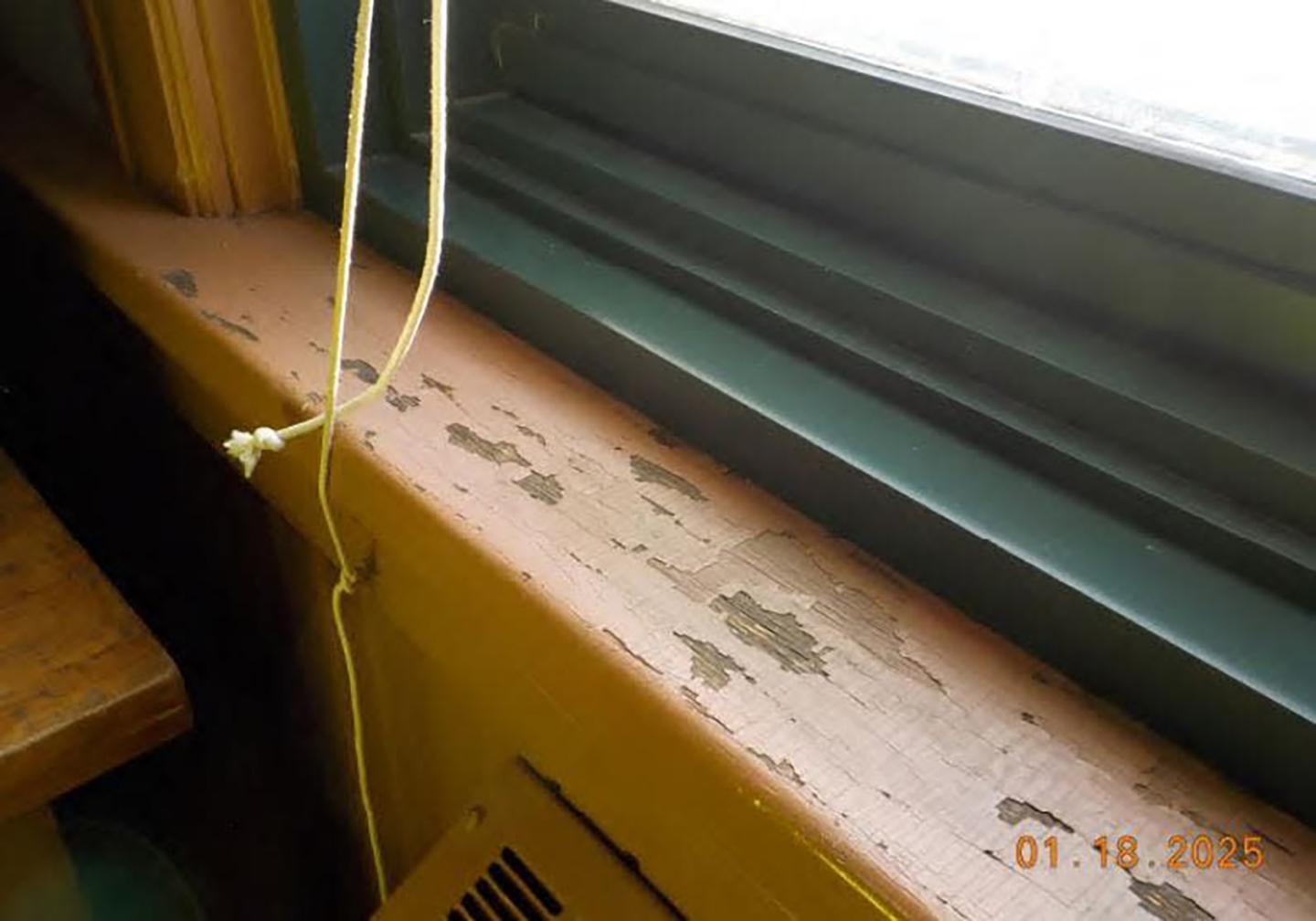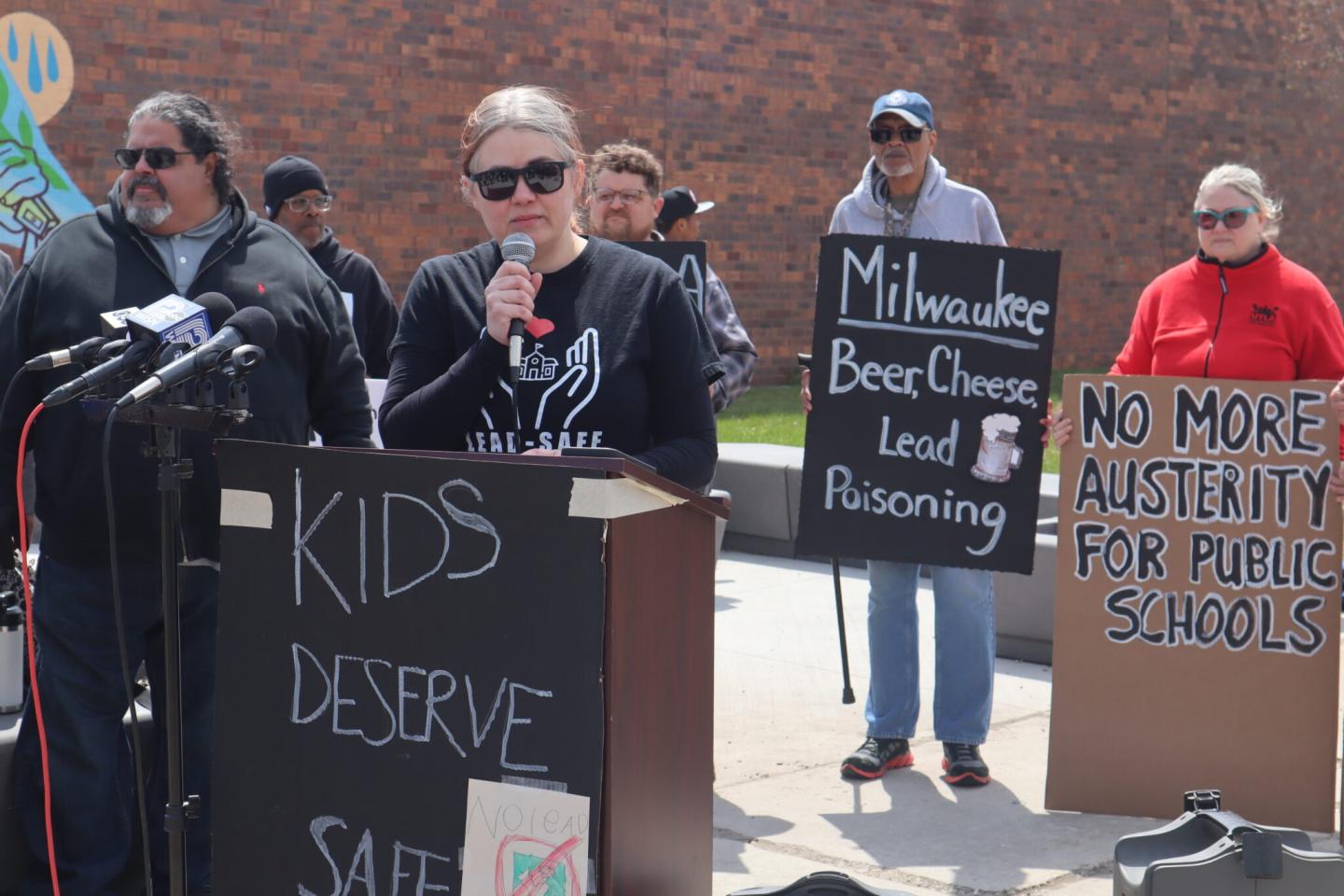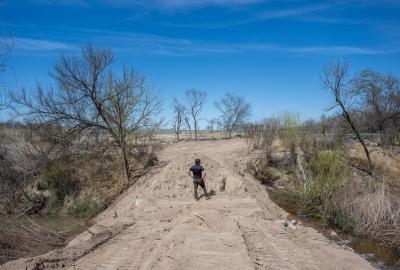When a lead poisoning crisis coincided with federal staffing cuts, kids suffered
Lisa Lucas thought her daughter was safe.
When news broke earlier this year that lead paint had poisoned a student at Milwaukee’s Golda Meir Elementary School, she worried for that child, but thought it was an isolated incident.
Then, in March, came a devastating discovery.

City inspectors found dust and debris contaminated with lead in her daughter Esme’s first-grade classroom. The public school she attended had recently done some painting, but Lucas says she had no idea that work could pose a risk to students.
Lead is highly toxic to the developing brain. Exposure is known to decrease a child’s IQ and impulse control; it’s also linked to ADHD, angry outbursts and behavioral problems.
“Knowing Esme had been exposed to lead was terrifying,” Lucas says. “It had me questioning every health and behavioral issue that she had.”
She rushed her daughter to the pediatrician for a blood test. Her lead level came back below the official threshold for her doctor to take action, but that didn’t put her mind at ease. Every time she turned on the news, Lucas learned about another contaminated school in Milwaukee. By April, the number of public schools shut down because of lead had grown to six and several children had tested positive for lead poisoning.
“That’s when I contacted Kristin Payne, a mom who started an advocacy group for parents called Lead Safe Schools MKE,” Lucas says. “I told her, ‘This is ridiculous. I’m in.’”
Together with other worried parents, they began calling for accountability from everyone from the Milwaukee school district to the state and federal government.
No safe level
Maria Doa is the chief chemicals expert for Environmental Defense Fund. EDF has worked to get lead out of people's daily lives for more than 50 years — first supporting its removal from gasoline, and more recently from water pipes and consumer products. “There’s no safe level of lead,” she says.
Doa points out that even the U.S. Centers for Disease Control and Prevention’s threshold of concern for blood lead levels, 3.5 micrograms per deciliter, is meant to trigger intervention by a child’s pediatrician and doesn’t mean exposure to lead is safe at low levels.

In Milwaukee, more than 100 of the city's public schools were built before 1978, when lead in paint was banned in the U.S. Before then, lead was routinely added to paint for color and durability.
Lead paint becomes problematic when it wears down and chips. Those chips are extremely dangerous if swallowed by a curious baby or toddler — and when they crumble into dust, the lead hazard can spread. People can inhale it or touch contaminated surfaces and then ingest lead if they don’t wash their hands before eating.
Even though the Milwaukee school district had protocols to minimize the risk presented by old paint in its buildings, like regularly painting over old paint to seal it, those protocols hadn’t been strictly followed. District officials say state leaders have starved public schools of the resources they need to operate, forcing impossible choices between maintaining buildings and hiring teachers.
But as the number of schools improperly maintained came to light, the district’s director of facilities was cited by the city and removed from his role.
Environmental news that matters, straight to your inbox
A perfect storm
As more schools tested positive for lead hazards, Milwaukee health officials made an urgent request for federal help on March 26, 2025.
Part of that request asked that highly trained epidemiologists from the CDC’s lead poisoning prevention and surveillance team come to the city to help guide and staff the response.
But the timing coincided with Health and Human Services Secretary Robert F. Kennedy Jr.’s restructuring of his agency and the elimination of 20,000 full-time positions. Those layoffs included the CDC’s entire lead team — the very toxicologists and epidemiologists whose help is critical during a lead crisis.
“Multiple agencies and levels of government work together to prevent lead poisoning in this country,” explains Amanda Reddy, who runs the National Center for Healthy Housing. “In a crisis, state and local governments depend on federal expertise. If it’s not there, it’s like firemen showing up to put out a fire and then finding out they have no water in their hoses.”
Dr. Michael Totoraitis, Milwaukee’s health commissioner, told reporters, “There’s no bat phone anymore,” as he struggled to lead his city through a crisis without anyone at the CDC to answer his calls.
The backlash
In April, Lead Safe Schools MKE, now made up of hundreds of concerned parents, organized a town hall and began calling for more help to tackle the crisis.

“Our babies are getting poisoned and so many levels of government haven’t been doing anything about it,” Lucas says.
On May 20, Wisconsin Senator Tammy Baldwin took parents’ concerns to Washington D.C. In a widely shared clip, Baldwin criticized Kennedy for dismissing the CDC’s lead experts, saying, “You cannot tell us that you want to make America healthy again when you are willfully destroying programs that keep children safe and healthy from lead poisoning.”
Under pressure, Kennedy said his department would maintain $51 million in funding for the Childhood Lead Poisoning Prevention Program.
By June, former federal lead experts were being rehired, though they learned that they will be splintered off from the CDC to work for a new agency being set up by the Trump administration called the Administration for a Healthy America, which will focus on health issues not related to infectious diseases. That administration may not be based in Atlanta, where the CDC’s offices are, and where many experts live.
A fragile victory
“The rehiring of experts is a positive turn of events,” says EDF’s Lindsay McCormick, who works to protect communities from lead and other toxic hazards. “But it’s a fragile victory, as other critical pieces of the federal lead poisoning prevention infrastructure are still at risk of being defunded.”
For example, lead hazard control grants — which are used to help remediate contaminated homes — are set to be cut by hundreds of millions. And federal funds that could be used for lead pipe replacement across the country are also at risk of being cut by the Trump administration.
What’s next?
The district is still working to mitigate the lead paint in its schools. Over summer break, officials focused on the district's oldest schools, but with 108 schools built before 1978, work continues.
As each mitigation finishes, the district brings in third-party inspectors to put parents’ minds at ease.
Even though public pressure helped to reverse cuts to the federal lead poisoning prevention and surveillance team, a wider threat to public health remains now that thousands of experts are gone from HHS, which oversees not only the CDC, but also the National Institutes of Health, the Food and Drug Administration and other important public health agencies.
According to Pat Breysse, who led the CDC’s efforts to address environmental health issues from 2014 until he retired in 2022, “I really worry that these cuts mean we’re going to see important public health issues not being addressed, and we’ll be weaker and less responsive when something does happen.”
Lisa Lucas still isn't sure who she can count on.
“I used to trust that there were systems in place to keep my child safe,” Lucas says. “It’s upsetting because I know we are a country with the resources to provide safe schools and safe houses for every single child in America,” she says. “It’s simply a matter of where we choose to put those resources.”


